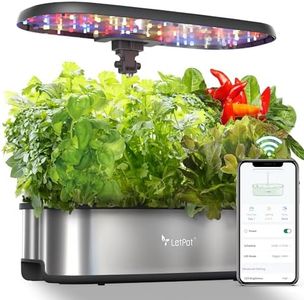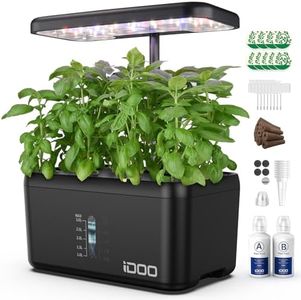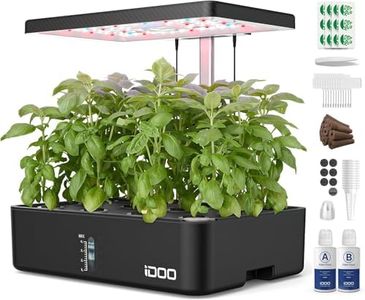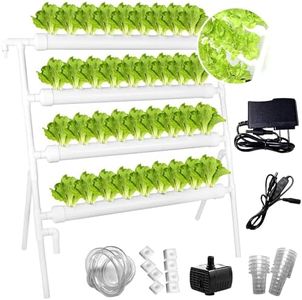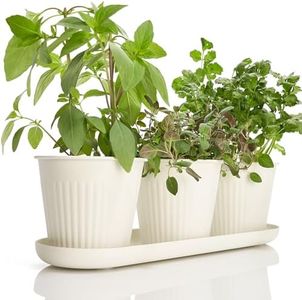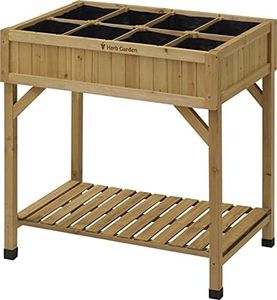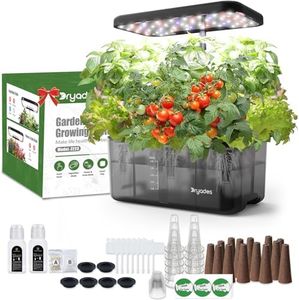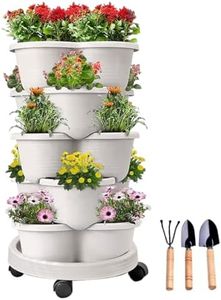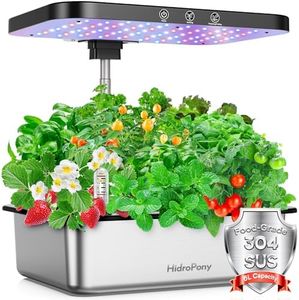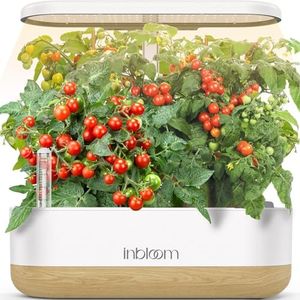We Use CookiesWe use cookies to enhance the security, performance,
functionality and for analytical and promotional activities. By continuing to browse this site you
are agreeing to our privacy policy
10 Best Indoor Herb Gardens
From leading brands and best sellers available on the web.Buying Guide for the Best Indoor Herb Gardens
Choosing an indoor herb garden is a fun way to bring fresh flavor into your home year-round, whether you're a beginner grower or a seasoned plant enthusiast. When picking the right system for you, it's helpful to consider how much time you want to spend caring for your plants, what herbs you enjoy using most, and where you'll place your garden. There are different types of indoor herb gardens, from soil-based pots to high-tech hydroponic systems, each with their own advantages and maintenance needs. You'll want to pay attention to how much space you have and how much light your chosen spot receives, as well as your interest in features like automation and expandability. Focusing on these key factors will help you find an indoor herb garden that fits your lifestyle and culinary needs.Type of Growing SystemThe growing system refers to how your herbs will get water, light, and nutrients. There are traditional soil gardens, hydroponic systems that use water instead of soil, and aeroponic options that mist roots with nutrients. Soil systems are more traditional and usually require hand-watering, making them simple and low-tech. Hydroponic and aeroponic systems may include built-in lights and automatic watering, which can be very convenient but sometimes require more setup or maintenance. If you prefer a hands-off experience or want faster growth, you might prefer a hydroponic or aeroponic garden. If you like a more hands-on, classic approach, soil-based gardens are a great fit.
LightingLighting is crucial for healthy herb growth indoors, especially if your garden spot doesn't get much sunlight. Some gardens come with built-in grow lights to ensure your plants get enough light no matter where they are in the house. Grow lights are often LED and use little energy, but their brightness and adjustability can vary. If your kitchen or chosen space has lots of natural light, you might not need built-in lights. But if your space is dim or you want reliable growth year-round, consider a garden with strong, adjustable lighting.
Size and CapacitySize and capacity refer to how many plants your indoor garden can support and how much space the unit will take up. Small countertop gardens may only hold a few herb pots, ideal for a windowsill or apartment, while larger systems can support a dozen or more plants. Think about both the variety of herbs you want to grow and where you'll put the garden. If you mostly use a few fresh herbs regularly, a small garden is sufficient. For big cooking projects or more variety, larger capacity is better. Always check the dimensions to be sure it fits your intended space.
Watering Method and MaintenanceDifferent indoor herb gardens have different watering methods: some require you to water by hand, while others offer self-watering or fully automated watering systems. Self-watering gardens use a reservoir and wicking system so you only need to refill occasionally. Automated systems might even alert you when they need water. If you travel often or want a low-maintenance option, look for systems that handle watering for you. If you enjoy tending to your plants daily, a manual watering system can be both enjoyable and sufficient.
Expandability and CustomizationExpandability is the ability to add more growing pods or modules as your gardening interest grows. Some systems are fixed, so what you buy is all you'll have, while others allow you to expand by connecting more units. Customization might also mean adjusting the height of lights or switching out plant pods for new herbs. If you see yourself wanting to try new herbs or expand your indoor garden in the future, a system with these options will suit you best. For those who only need a small, stable garden, expandability isn't as important.
